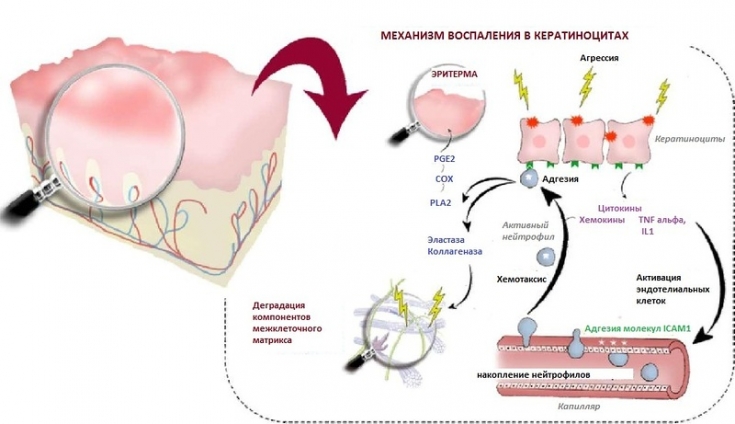Modern cosmetic procedures allow solving most aesthetic problems associated with the skin: scar correction, elimination of pigmentation and rosacea, slowing down chrono- and photoaging, non-injection plastic surgery, botulinum therapy and much more.
However, the more minimally invasive methods are used, the greater the likelihood of infectious complications: from mild erythema to extensive pyoderma – it all depends on the responsibility of the specialist and the awareness of the patient.
On estet-potral.com, read about infectious complications after cosmetic procedures, as well as how to prevent undesirable consequences for patients.
Main etiological factors of infectious complications
Infectious complications arise when the rules of asepsis and antisepsis are not followed, the doctor and the patient are irresponsible.
Any damage to the skin due to cosmetic procedures carries the risk of attaching a bacterial, viral or fungal infection.
As a rule, erythematous-pustular or vesicular rashes appear in the places of skin damage already in the first days of the pathogen entering the patient's body.
The main etiological factor of inflammation is Staphylococcus aureus or Streptococcus pyogenes.
In delayed bacterial complications, infection is often provoked by Escherichia coli or mycobacteria.
In addition to rashes, the acute process is also characterized by general symptoms in the form of malaise, elevated body temperature and local temperature (in places of inflammation on the skin), pain, fever.
Of the viral infections, the most dangerous are those transmitted by instrumental means: hepatitis B and Herpes simplex. >
Mechanisms of the development of an infectious inflammatory process: symptoms and stages
The main sign of an infectious complication in a patient is the presence of an inflammatory reaction of the body.
Three phases are distinguished during any inflammation:
1. Stage of alteration (damage);
2. Stage of exudation and emigration;
3. The stage of proliferation and regeneration.
The infectious course is characterized by the predominance of serous or purulent inflammation, depending on the pathogen.
 • functional dysfunction (functio laesa).
• functional dysfunction (functio laesa).
Read us also in
Telegram
!
A blood picture may also indicate an acute inflammatory process:
An increase in C-reactive protein and an increase in antibody titer in the blood is also a clear sign of the acute phase of inflammation.
The most serious complication of the pathological process is sepsis, so it is so important to treat infectious foci already in the early stages.
Treatment of infected inflammatory processes of the skin
In the presence of abscesses or phlegmon, surgical intervention is necessary – opening the abscess, washing with an antiseptic solution and draining.Prevention of infectious complications after cosmetic procedures
In order to avoid negative consequences after cosmetic surgery, it is mandatory to follow the rules of asepsis and antisepsis, thorough sterilization of instruments, use of disposable needles.
It is very important to properly care for the skin of patients during the rehabilitation period.
It is the physician's responsibility to warn the patient about secondary infection and explain preventive measures such as the use of topical antiseptics and in case of adverse reactions – about seeking help in a timely manner.
Also, the doctor must be aware of the client's chronic inflammatory diseases, possible contraindications.
Only the qualifications, responsibility of the specialist and the patient's awareness can prevent unwanted complications after cosmetic procedures.You may also be interested in:







Add a comment